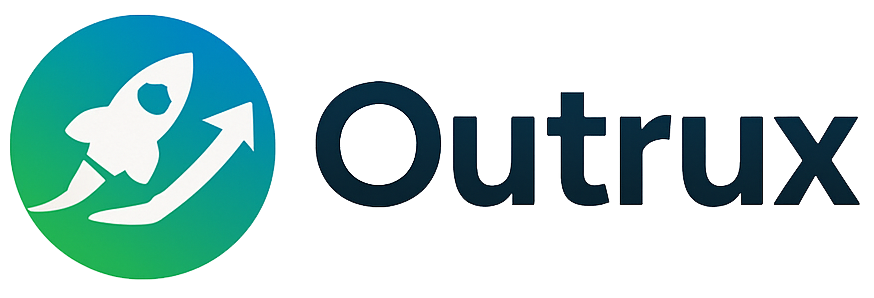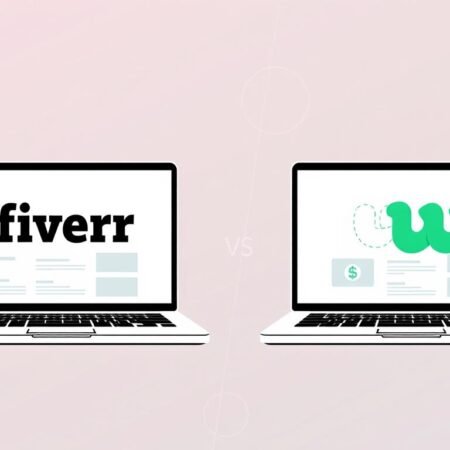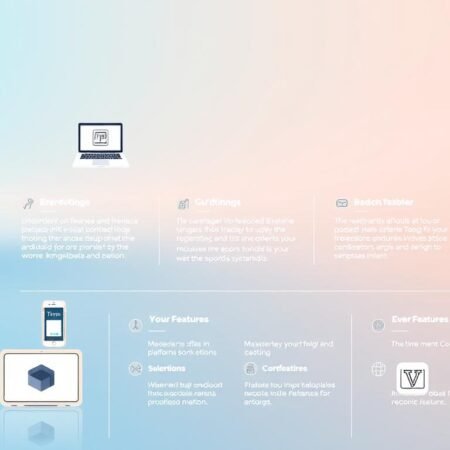
Imagine creating something once and earning from it repeatedly. The world of digital products makes this possible, with the global market projected to hit $26 trillion by 2034. From ebooks to AI-generated art, these intangible goods are reshaping how creators build sustainable income streams.
Why are savvy entrepreneurs rushing into this space? Unlike physical items, virtual creations require no inventory or shipping. They scale effortlessly across borders and time zones. Platforms like Etsy now host everything from printable planners to blockchain-authenticated collectibles.
The real magic lies in passive potential. A well-designed template or online course can sell to thousands simultaneously. Educators transform expertise into video series. Artists monetize digital downloads alongside physical prints. This guide reveals how to position your work in booming niches like eLearning and interactive experiences.
By 2025, success will favor those who combine creativity with smart platform strategies. We’ll explore modern formats, marketing tactics, and monetization methods tailored for tomorrow’s market. Ready to turn your skills into a thriving business that works while you rest?
Introduction
Unlock a future where your expertise becomes a 24/7 revenue stream without lifting a finger. The landscape of virtual assets has transformed how people build sustainable income, with global markets projected to surpass $26 trillion by 2034.

Modern creators leverage platforms to turn skills into automated ventures. Interactive tutorials, subscription memberships, and blockchain-certified art now dominate consumer wishlists. This shift toward instant access eliminates inventory headaches and geographical limits.
Success stories range from parents designing printable meal planners to engineers selling code templates. The barrier to entry? A unique skill and internet connection. User-friendly tools handle technical heavy lifting, letting anyone focus on their strengths.
Misconceptions still linger. Many assume you need massive audiences or cutting-edge tech. Truthfully, profitability stems from solving specific problems for niche markets. A well-crafted template or guide often outperforms generic offerings.
This guide demystifies the process with actionable strategies for 2025’s booming sectors. Discover how to position your work in high-demand categories while safeguarding intellectual property. Let’s build a business that thrives while you sleep.
Understanding What Digital Products Are
What exactly constitutes a product in our increasingly virtual marketplace? Unlike physical items, these assets exist as code-based files or online experiences. They solve problems through instant access—whether it’s a language-learning app or customizable resume templates.

Core Characteristics and Delivery Methods
Virtual creations range from simple PDFs to AI-powered tools. Common formats include:
- Educational resources (e-books, video courses)
- Creative files (graphic packs, 3D models)
- Functional tools (spreadsheet templates, browser extensions)
Distribution happens through email links, platform dashboards, or app stores. One master file can serve unlimited customers without quality loss. Updates reach users automatically—no shipping required.
Emerging formats blend interactivity with real-world utility. Augmented reality filters and blockchain-certified art demonstrate this evolution. These innovations enable creators to build immersive experiences that adapt to user needs.
The environmental benefit matters too. No raw materials or transportation fuels climate impact. Customers gain lifetime access while creators enjoy scalable income—a win-win shaped by modern tech.
Advantages of Selling Digital Products over Physical Items
Why are forward-thinking entrepreneurs pivoting to virtual goods? The answer lies in streamlined operations and borderless opportunities. Unlike traditional models, these assets eliminate physical constraints while maximizing profitability.

Low Overhead and High Profit Margins
Forget warehouse fees and unsold inventory. Virtual creations remove production costs after the initial development. Each subsequent sale delivers pure profit—no manufacturing or shipping required. A $50 template could generate $5,000 monthly with just 100 buyers.
Automation and Global Reach
Platforms handle transactions while you sleep. Instant downloads satisfy customers in Tokyo or Toronto simultaneously. Time zones become irrelevant when your store operates 24/7. Updates roll out automatically, keeping offerings fresh without manual labor.
Geographical barriers vanish. A language app can help students in 50 countries while you focus on marketing strategies. This scalability transforms local ideas into worldwide solutions. Plus, eco-conscious buyers appreciate the reduced environmental impact compared to physical shipments.
Exploring the Best Digital Product Categories for 2025
Which virtual assets will dominate tomorrow’s economy? The $26 trillion market forecast reveals explosive growth in specialized niches. Emerging tech and shifting consumer habits create fresh opportunities for creators ready to innovate.

AI-powered tools lead the charge. Customizable art generators and smart writing assistants top demand lists. Interactive experiences like VR templates and gamified tutorials also gain traction. These formats blend utility with entertainment.
Traditional categories evolve with modern twists. Educational content now features micro-lessons and community-driven coaching. Printable planners integrate with productivity apps. Even classic ebooks transform into multimedia guides with embedded video.
Three high-potential areas for new business ventures:
- Niche skill-building kits (coding challenges, language flashcards)
- Augmented reality filters for social media
- Industry-specific spreadsheet templates
Seasonal trends impact certain niches. Holiday-themed design bundles sell best in Q4, while fitness trackers peak in January. Analyze search patterns to time launches perfectly.
Success hinges on solving specific problems. A gardening calendar app outperforms generic planners. Focus on underserved audiences craving tailored solutions. With low competition and high margins, these products offer sustainable income streams.
Online Courses for Digital Product Success
Transform knowledge into lasting value through educational content that scales globally. The e-learning sector’s projected $848 billion valuation by 2030 creates unmatched opportunities for experts to monetize their skills. Unlike static files, courses build communities while delivering measurable results.

Creating Engaging Course Content
Structure lessons around real-world outcomes. Video modules paired with downloadable worksheets help people apply concepts immediately. Interactive elements like timed quizzes increase completion rates by 60% compared to text-only formats.
Break complex topics into bite-sized segments. Weekly challenges or live Q&A sessions foster accountability. Successful creators use storytelling frameworks to make technical subjects relatable. For example, a coding tutorial might follow a character building their first app.
Leveraging Expert Collaboration
Partner with industry leaders to expand your audience. Guest lectures add credibility, while co-branded certifications attract premium pricing. Platforms like Teachable simplify joint ventures through revenue-sharing tools.
Collaborative projects also spark fresh ideas. A nutritionist and chef could develop meal-planning workshops. These partnerships often lead to cross-promotion, tapping into each expert’s follower base. Always formalize agreements to protect intellectual property rights.
Ebooks, Printables, and Digital Planners to Boost Passive Income
Three formats stand out for their versatility and demand in today’s creator economy. These assets combine accessibility with personalization, making them ideal for building automated revenue streams.

Differentiating Your Ebook Offerings
Modern readers crave more than static text. Successful products embed audio clips, clickable worksheets, or community access codes. Analyze trending search terms to identify underserved topics—like “urban gardening for apartments” versus generic gardening guides.
Pricing flexibility drives conversions. Offer free chapters paired with premium bundles that include video tutorials. This approach builds trust while showcasing your content’s depth. Limited-time discounts on series packages encourage bulk purchases.
Maximizing Sales with Customized Printables
Consumers want designs that reflect their personalities. Create editable templates for party invitations or budget trackers where users input their colors and fonts. Tools like Canva integrations boost appeal by letting customers modify files effortlessly.
Seasonal variations keep offerings fresh. A Halloween-themed meal planner outsells generic versions every October. Pair printables with tutorial videos to demonstrate creative uses—like framing digital art or assembling 3D models.
Digital planners bridge tech and tradition. Hyperlinked PDFs with habit-tracking sections attract productivity enthusiasts. Offer cloud-synced versions for cross-device access, turning single purchases into year-round business opportunities.
Digital Templates and Tools: Creating Professional Assets
Professionals across industries now rely on ready-made resources to elevate their work. Templates and specialized software tools save hours by providing polished frameworks for common tasks. From architects using 3D model kits to marketers deploying campaign planners, these assets turn complexity into efficiency.
RetroSupply Co exemplifies this trend, offering designers brushes and textures compatible with Photoshop. Their success stems from solving specific pain points—like recreating vintage effects quickly. Similar opportunities exist in fields like HR (résumé builders) and finance (budget trackers).
Key Elements for Effective Digital Templates
Top-performing resources share three traits:
- Adaptability: Editable layers in design files let users personalize outputs
- Cross-Platform Functionality: Formats work in popular tools like Canva and Figma
- Comprehensive Support: Tutorial videos and style guides reduce learning curves
Emerging niches like AI prompt libraries demonstrate the sector’s evolution. Developers now sell ChatGPT frameworks that generate marketing copy or code snippets. These tools thrive by integrating with existing workflows rather than replacing them.
Technical precision matters. Font licenses must allow commercial use, while spreadsheet formulas need error-checking. Successful creators test files across multiple platforms to ensure seamless performance. This attention to detail builds trust and repeat sales.
Licensed Digital Content: Safeguarding Your Creations
Protecting your creative work becomes crucial as virtual assets gain global value. Licensing transforms original media into recurring revenue streams while maintaining ownership. From photography to sound effects, specialized marketplaces connect creators with businesses needing authentic visuals and audio.
Security Through Technology and Strategy
Watermarks and encrypted files prevent unauthorized use without compromising preview quality. Platforms like Adobe Stock automatically embed metadata to track content usage. Blockchain solutions now offer immutable ownership records for high-value digital collectibles.
Diversify income by offering tiered licenses. Standard permissions might cover personal use, while extended agreements allow commercial reproduction. Some businesses pay premium rates for exclusive rights to fonts or video clips in advertising campaigns.
Popular licensable formats include:
- 4K video backgrounds for filmmakers
- Royalty-free music loops for app developers
- Vector icon packs for web designers
Established platforms handle legal complexities like usage disputes. Shutterstock’s contributor program shows how standardized contracts streamline sales across 150 countries. Independent stores using WooCommerce plugins maintain control through customizable license terms.
Regular audits ensure compliance. Tools like Pixsy scan the web for unlicensed material, automatically generating takedown notices. This proactive approach turns intellectual property into a self-sustaining business asset that grows while you focus on new creations.










